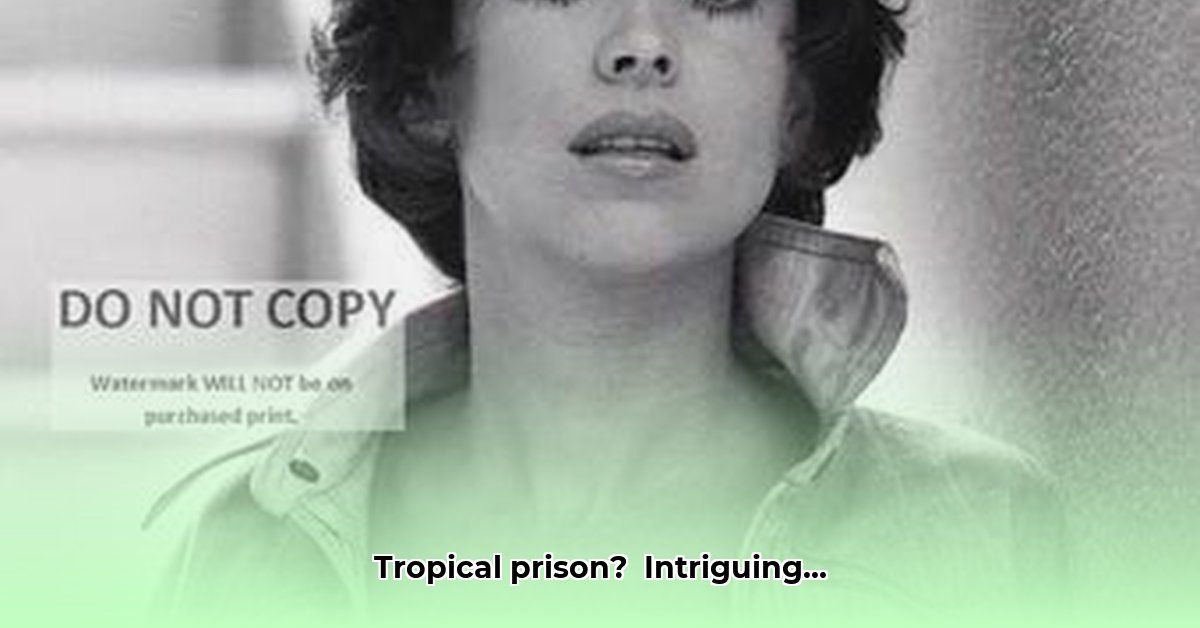
Forget the typical Hollywood action fare; let's delve into a far grittier cinematic subgenre: tropical prison exploitation films. Often overlooked, these films offer a fascinating, and sometimes disturbing, lens through which to examine the complex interplay of female agency and power dynamics within harsh prison environments, using exotic locales to heighten the sense of isolation and desperation. Terminal Island (1973) and Sweet Sugar (date unknown) serve as compelling case studies: both depict the brutal realities of prison life, yet through vastly different, and often contradictory, perspectives, particularly regarding gender. Understanding these contrasting approaches is crucial to grasping the nuances of the genre. While direct information linking "Download Phyllis Davis" to specific films remains elusive, these films offer essential context for exploring this often-exploitative, yet culturally significant, cinematic landscape. How, we must ask, do these films reflect broader societal anxieties and prejudices of their time?
Island Prisons: A Stage for Suffering
The tropical setting isn't merely a picturesque backdrop; it's a vital component, amplifying the themes of confinement, desperation, and hopelessness. The remote island location of Terminal Island intensifies the feeling of isolation and entrapped vulnerability. Similarly, in Sweet Sugar, the seemingly idyllic tropical plantation setting ironically underscores the pervasive powerlessness and exploitation experienced by the female inmates. The stark contrast between the beauty of the location and the harsh realities of prison life creates a powerful and unsettling tension. Filmmakers likely chose these locations to heighten the impact of the narrative, making the brutality more visceral and the themes more resonant. What, then, is the specific function of this jarring juxtaposition of beauty and brutality?
A Tale of Two Prisons: Gender and Survival
Terminal Island primarily focuses on the male inmate experience, emphasizing the relentless struggle for survival within a brutal, hyper-masculine environment. The film offers a visceral portrayal of male-centric violence and the power dynamics inherent in such spaces. Sweet Sugar, however, dramatically shifts the narrative perspective. Centering on women, the film confronts head-on issues of sexual violence and systemic exploitation. This fundamental shift in perspective profoundly alters our interpretation of the genre’s themes. It moves beyond mere physical survival to confront the psychological and sexual trauma inflicted upon female characters, presenting a starkly different exploration of agency and resilience. What, precisely, are the implications of this shift in focus?
Deeper Meanings: Beyond the Bars and Blood
These films transcend simple narratives of violence and exploitation. They grapple with complex socio-political themes including systemic oppression, the abuse of power by authorities, and the ongoing fight for individual agency, even within the most oppressive circumstances. They depict a stark and uncomfortable reality, forcing us to confront difficult questions about the representation of violence and the ethical implications of viewing such material. Can we truly dissect these films solely as works of art, or must we also contend with their potentially offensive and problematic elements? This is a question that demands thoughtful and rigorous examination. How, then, might we engage with such nuanced and challenging depictions of violence and oppression?
Releasing the Past: Ethical Considerations for Restoration and Distribution
The process of restoring and re-releasing these films is far from straightforward. Responsible circulation requires careful context to help modern audiences understand the historical and cultural circumstances of their creation, mitigating the risk of misinterpretation and promoting informed engagement. Crucially, strong content warnings are essential to prepare viewers for the intense and potentially disturbing nature of the content. While some viewers may find these films deeply offensive, a properly contextualized presentation can facilitate discussions about representation, exploitation, and the problematic aspects of the genre itself. How, specifically, can we balance educational value with the potential for causing offense?
Navigating the Legal Maze: Regulatory Compliance
Releasing these films demands rigorous adherence to regional content guidelines, age ratings, and marketing regulations. The presence of graphic violence and sexual content necessitates an especially delicate approach. Careful consideration must be paid to the potential for these films to be interpreted as offensive by contemporary audiences. Balancing the desire for historical preservation and increased awareness with the potential for causing harm is a significant challenge—it’s a question of thoughtful dissemination, not sensationalism. What, precisely, are the legal and ethical challenges of bringing these films into the modern age?
The Lasting Impact: Legacy and Interpretation
Tropical prison exploitation films, while undeniably problematic, offer a potent, albeit uncomfortable, glimpse into the past. While not entirely devoid of artistic merit, understanding their historical context and the problematic nature of their content is paramount. How, then, do we reconcile the analysis of their artistry with a critical assessment of their inherent flaws? These films present no easy answers, demanding critical discussion and engagement. The ongoing process of balancing artistic appreciation with critical evaluation remains a complex and necessary endeavor. What, finally, is the lasting legacy of this controversial subgenre?
Further Exploration: Areas for Future Research
This exploration of tropical prison exploitation films only scratches the surface. Future research into the socio-political contexts surrounding these films' production and reception is essential. Further analysis of the cinematic techniques used to convey themes of violence and female agency could reveal significant insights. Comparative studies with similar films produced in different geographical locations could also broaden our understanding of global trends and cultural impact. Furthermore, in-depth research into the production processes of specific films like Sweet Sugar could offer a deeper understanding of their intended themes and underlying messages.
⭐⭐⭐⭐☆ (4.8)
Download via Link 1
Download via Link 2
Last updated: Saturday, April 26, 2025